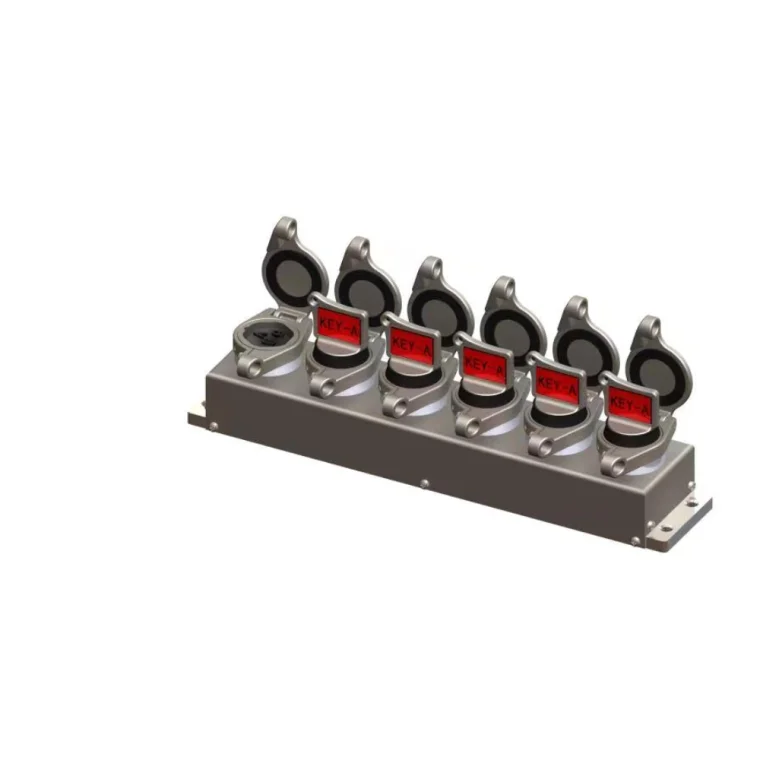In modern industrial and high-risk operating environments, safety is the most important part of all management measures. With the continuous advancement of technology, various safety devices have emerged, and the trapped key interlock system is one of the widely used safety protection tools. This system can not only effectively avoid operating errors and accidents, but also ensure the safety of employees and equipment under strict operating specifications. However, although the trapped key interlock system plays an important role in providing safety protection, its requirements for the working environment cannot be ignored. This article will discuss in detail the specific requirements of the trapped key interlock system for the environment to help companies in related industries understand how to correctly select and use this safety system.
The trapped key interlock system is a control system used to ensure that equipment can only operate under safe conditions. The system implements interlock protection through mechanical or electronic means to prevent the equipment from being started or operated in an inappropriate state. The trapped key interlock system is often used in high-risk industries such as chemicals, electricity, mining, and petroleum, and can effectively avoid safety accidents caused by equipment operation errors or an improper environment.
In actual applications, when the equipment is in a dangerous state, the system will automatically lock the relevant operating keys, and the operator cannot start the equipment until the environment meets safety standards and the locking mechanism is released. The key to this system is its "environmental adaptability" – the system must ensure stable operation in various working environments to prevent system failure and ensure maximum safety protection.
Environmental requirements:
In order to ensure that the trapped key interlock system can operate effectively, it has very strict requirements on the environment. The following are some key environmental factors:
1. Temperature and humidity control
The design of the trapped key interlock system must consider the impact of temperature and humidity on system components. Extreme temperatures (too high or too low) and excessive humidity may cause the metal parts of the interlock system to rust, and the electronic components to become damp or damaged. Therefore, the environment where the trapped key interlock system is installed should have a temperature and humidity control mechanism. For example, in high-temperature environments such as chemical plants or oil fields, it is necessary to ensure that the equipment can withstand high temperatures; in humid environments, it is necessary to consider the use of moisture-proof and corrosion-resistant materials.

2. Dust-proof and anti-corrosion design
In some special environments, such as chemical processing plants or mines, dust and corrosive gases may cause damage to the trapped key interlock system. Dust may not only cause mechanical parts to get stuck, but also affect the sensitivity of electronic control systems. Corrosive gases may cause rapid corrosion of metal parts, which in turn affects the reliability of the system. Therefore, in order to cope with this environment, many trapped key interlock companies will choose to adopt dust-proof and anti-corrosion designs to ensure the stability of the system in harsh environments.
3. Vibration and shock protection
In some heavy industrial environments, such as mechanical processing plants or mining sites, vibration and shock are common working conditions. Vibration and shock may cause mechanical parts to loosen, sensors to fail, and even cause damage to some components of the interlock system. In order to adapt to these environmental conditions, designers will enhance the shock and shock resistance of the trapped key interlock system, use materials with strong shock resistance, and reinforce the structure of the system. This ensures that the system can maintain a stable working state even in a high-vibration environment.
4. Electromagnetic interference protection
With the improvement of industrial automation, more and more equipment and systems rely on electronic control. Electromagnetic interference (EMI) may have a serious impact on electronic components, causing system failure or failure. Especially in the power industry or in an environment with a large number of electrical equipment, the problem of electromagnetic interference is more prominent. In order to prevent this problem, products with electromagnetic interference protection are usually selected. These products can effectively prevent the influence of external electromagnetic waves on the interlocking system and ensure the stable operation of the system.
5. Cleanliness and anti-pollution requirements
For some industries with high cleanliness requirements, such as the pharmaceutical and food processing industries, the design of the trapped key interlocking system must meet the corresponding hygiene standards. These environments have extremely high requirements for the cleanliness of the equipment. Therefore, the components of the interlocking system must be made of easy-to-clean materials, such as stainless steel or other corrosion-resistant and dust-resistant surface coatings. In addition, the design of the interlocking system should also avoid the use of components that will accumulate dust, bacteria, or other contaminants to ensure that it meets the cleanliness and hygiene requirements of the industry.
6. Explosion-proof and fire-proof requirements
In some hazardous environments, there are flammable and explosive gases or liquids, which require the trapped key interlocking system to have explosion-proof and fire-proof characteristics. Especially in high-risk industries such as petroleum, chemical, and mining, equipment and systems must have explosion-proof designs to prevent explosions or fires caused by sparks or high temperatures during operation. Interlocking systems in such environments usually use explosion-proof certified materials and special designs to ensure that they can still operate safely in extreme environments.
As an important safety protection device, the trapped key interlock system can effectively prevent equipment misoperation and accidents, and ensure the safety of personnel and equipment in industrial environments. However, the effective operation of this system is inseparable from the support of environmental conditions. Factors such as temperature and humidity control, dust and corrosion prevention, vibration, and electromagnetic interference protection are all factors that must be considered when choosing a suitable trapped key interlock system. When selecting a system, it is necessary to select suitable products based on the characteristics of the actual working environment and ensure that the equipment can operate stably in a specific environment to achieve maximum safety protection. By cooperating with a professional trapped key interlock company, you can create a safer working environment and avoid safety accidents caused by improper operation.
www.nudango.com
Shanghai Nudango Safety Equipment Co., Ltd.

